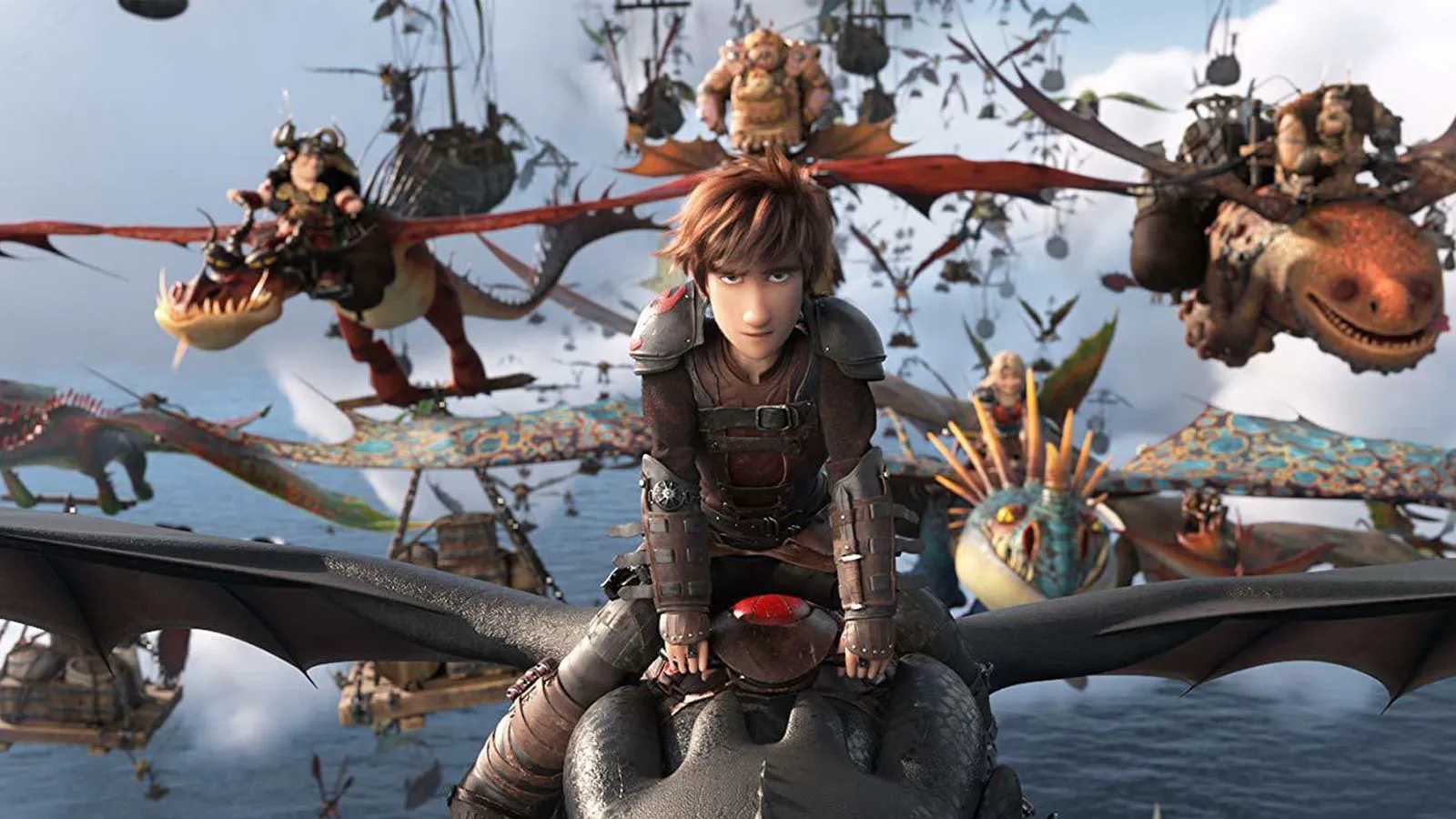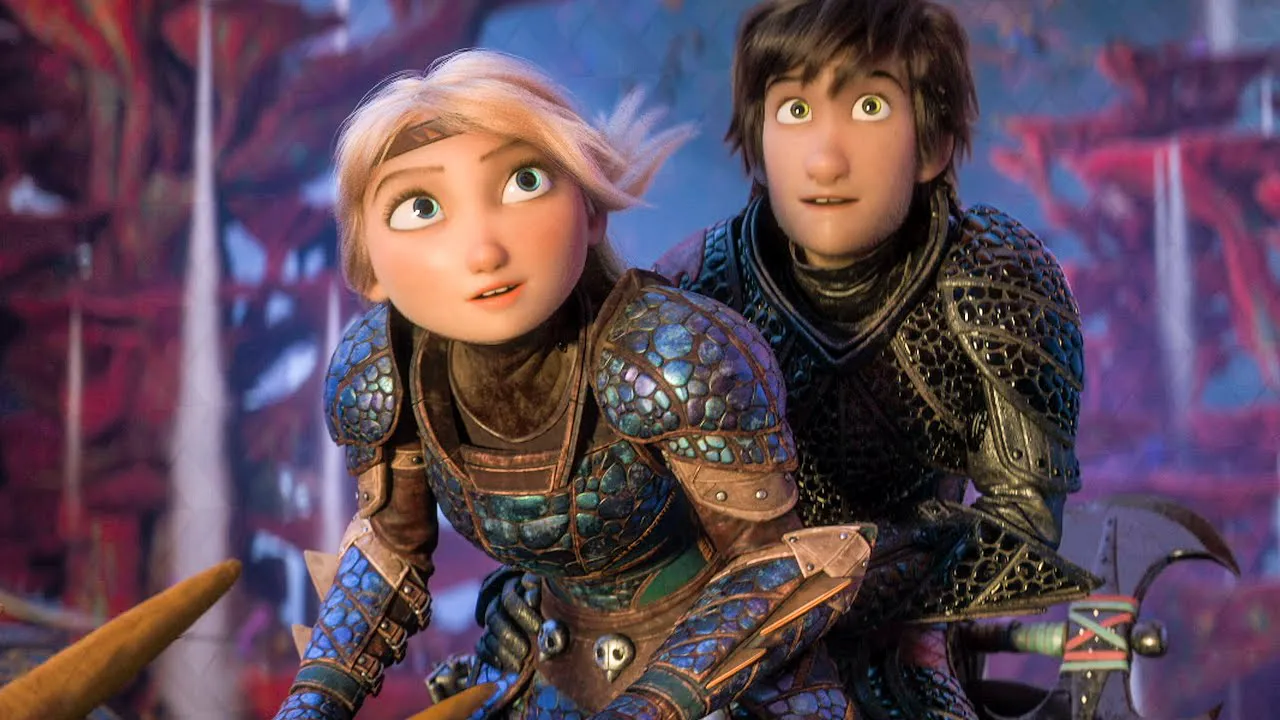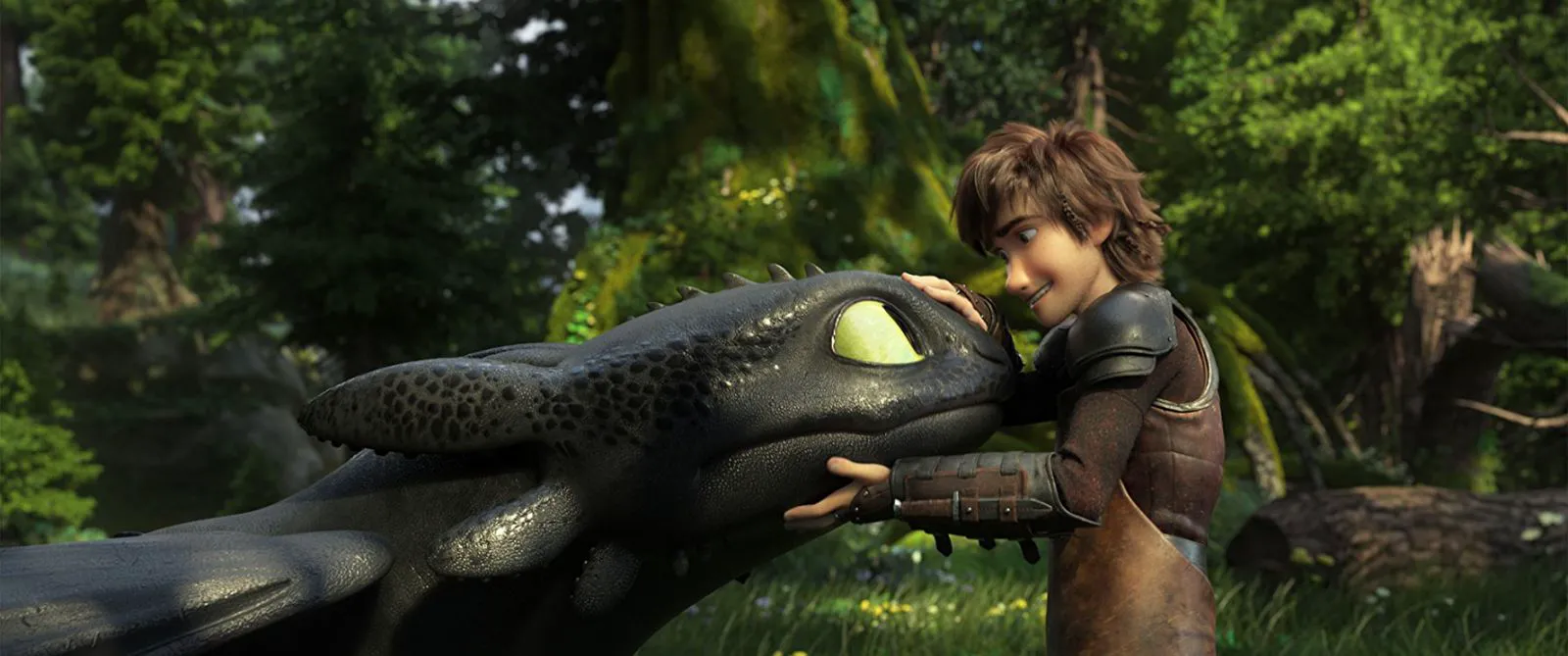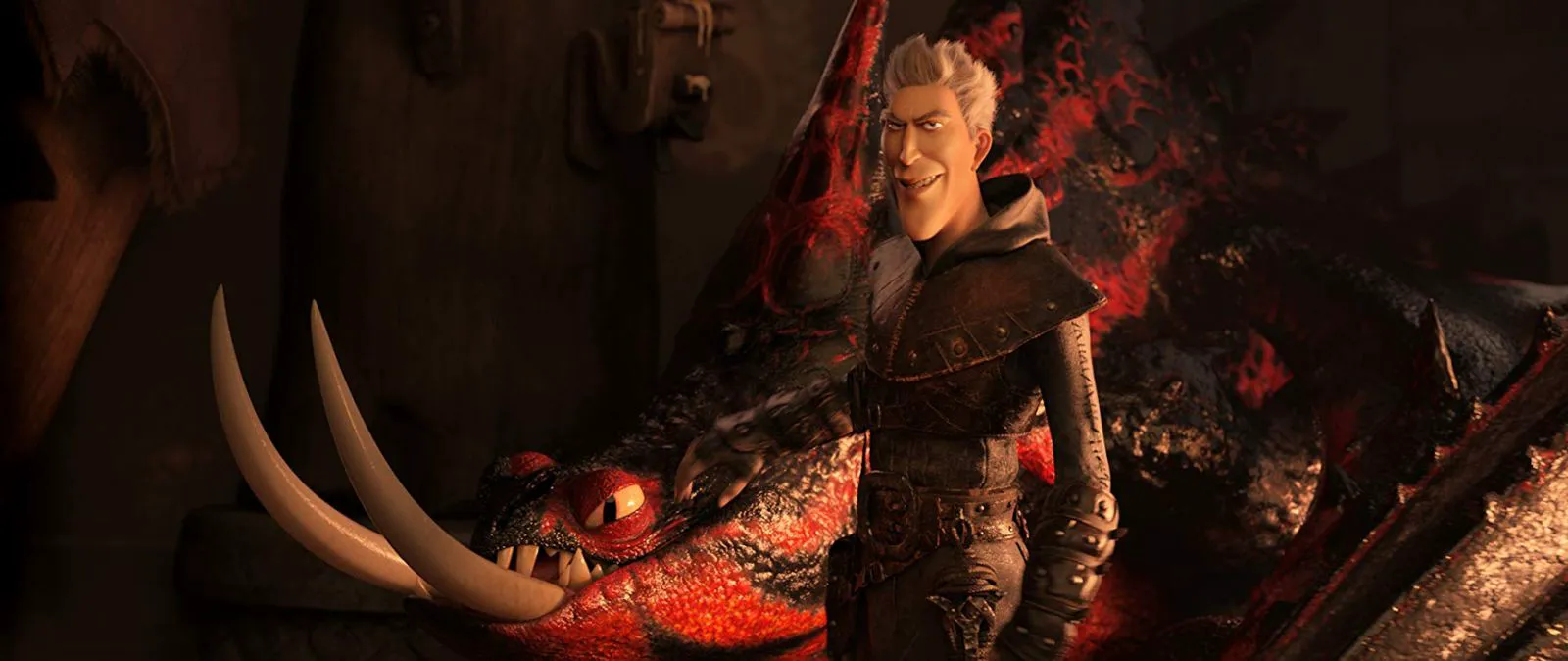The final installment of DreamWorks’ excellent franchise is sweet, but, like one of its characters, utterly toothless.
Hiccup, the Viking chief, Toothless, and about a billion other dragons live peacefully on the island of Berk. However, the population density is becoming excessive. Moreover, Hiccup and his friends regularly rescue dragons from human captivity, and there’s hardly any room left to house them. As if demographic issues weren’t enough, disgruntled dragon slave owners hire the world’s greatest dragon hunter, who harbors a deep hatred for Night Furies and once exterminated them all (leaving only Toothless). Seeing an opportunity to finish his old business, he accepts the job and begins luring Toothless with a white female. Meanwhile, Hiccup is devising a grand plan to move all of Berk, with its Vikings and dragons, to a semi-mythical land of dragons located somewhere at the edge of the world.

DreamWorks is currently going through a rough patch, to put it mildly (artistically, at least). Once, they rivaled Disney and snatched Oscars from Pixar. Now, they’re mired in boring commercial fluff for the youngest audiences. In this sense, “How to Train Your Dragon 3,” the final part of one of their strongest franchises, feels like a swan song of the studio’s former greatness. It’s a bit sad, but at least they’re doing everything right here. Had they not ended the series now, “Dragons” would surely have suffered the fate of something like “Ice Age.” One wouldn’t wish that on their worst enemy.

The second part already showed signs of repetition and, although it was a wonderful film overall, clearly indicated that ideas were running out and things were unlikely to improve. The third “Dragons” offers no surprises. It often stumbles, treads water, and stubbornly returns to formulas that once worked. Moreover, while the sequel compensated for its lack of originality with an interesting tonal shift towards darkness and death, the third film leans towards sentimental sweetness.

The “Dragon” franchise seems to deliberately follow in the footsteps of “Kung Fu Panda,” another outstanding series from DreamWorks. There, too, the second part suddenly addressed grim and ambiguous themes, while the third reduced all attempts at psychology to cute, fluffy animals. These two threequels have a suspiciously large number of coincidences: the story centers on a world that was considered lost, and a hero who finds peace in it. In both cases, the colorful supporting characters become static background (in “Dragons,” they’re also quite irritating), the villains are pale (literally) copies of previous ones, and the action scenes—though still competently drawn—suddenly lose their former spark.

Of course, there can be no plagiarism: the book series on which “Dragons” is based ended in 2012, a year before the release of the third “Panda.” But the trend is interesting. Apparently, this is how the eternal disease of franchise finales manifests itself: an attempt to concisely conclude the stated themes and let them go down the path of least resistance, through romantic lines, relatives who come out of nowhere, and other scriptwriting fast food. The film consistently closes all the gestalts—often skillfully, sometimes not so much—while itself being, in essence, one big attempt by the authors to close a personal gestalt.
Missed Opportunities
It’s a shame that they don’t have enough courage for risks even at the level of the sequel. And yet, the heart of the story—the wonderful bromance between Hiccup and Toothless—is too powerful to be simply spoiled by a safe but generally competent approach. In the end, the only real “complaint” about the film is its disjointed and very strange social message. “Dragons” has always been about equality, brotherhood, and love for the “different,” but the threequel begins to openly compare flying creatures to migrants—which is already slightly dubious. Moreover, in its social message, the film immediately comes to two non-obvious ideas: one is an almost verbatim repetition of the thought from the third “Thor” (about Asgard being where the Asgardians are), and the second—which ultimately becomes the solution to their migration problem—would surely have pleased Grandpa Trump. In short, Hollywood decided to add “Immigrant Song” to the wrong film about Scandinavians.